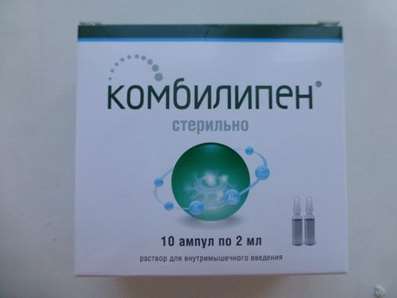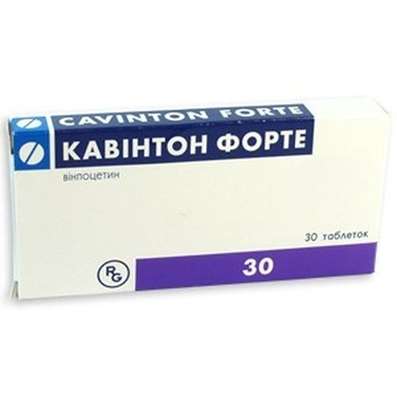Active Substances - Lorazepam
25 Dec 2016
Name: Lorazepam
The Latin name of the substance Lorazepamum (genus. Lorazepami).
chemical name 7-Chloro-5- (2-chlorophenyl) -1,3-dihydro-3-hydroxy-2H-1,4-benzodiazepin-2-on
Formula - C15H10Cl2N2O2
Therapeutic agents of Lorazepam: anxiolytics
The nosological classification (ICD-10)
F10.3 abstinence
F10.5Alcoholic psychosis
F32 Depressive episode
F40.0 Agoraphobia
F41.0 Panic disorder [episodic paroxysmal anxiety]
F41.1 Generalized anxiety disorder
F42 Obsessive-compulsive disorder
F43.1 Post-traumatic stress disorder
F51.0 Insomnia inorganic etiology
F91 Conduct disorders
G40 Epilepsy
G44.2 tension headache types
G47.0 Disorders of falling asleep and maintaining sleep [insomnia]
R45.0 Nervousness
R45.1 Restlessness and agitation
R45.7 State of emotional shock and stress, unspecified
Z100 * CLASS XXII Surgical practice
Characteristics substance Lorazepam
Anxiolytic, benzodiazepine derivative.
Almost white powder, very slightly soluble in water.
Pharmacology
Mode of action - anxiolytic, sedative, hypnotic, muscle relaxant, central, anticonvulsant.
Interacts with specific receptors, benzodiazepine GABA-benzodiazepine receptor complex, increases the sensitivity of the GABA receptor for GABA. As a result, increases the frequency of the opening of transmembrane channels for chlorine ions, hyperpolarizing the postsynaptic membrane of a neuron, inhibited neuronal activity and inhibited the transfer of interneurons in the CNS. The effects are due to the influence of the various departments of the central nervous system: amygdala limbic system (anxiolytic), the reticular formation of the brain stem and the nonspecific nuclei of the thalamus, the hypothalamus (a sedative and hypnotic), spinal cord (muscle relaxant), hippocampus (anticonvulsant). Reduces the excitability of subcortical structures (the limbic system, thalamus, hypothalamus) responsible for the implementation of emotional responses, and inhibits the interaction of these structures with the cerebral cortex. It stabilizes the autonomic functions. You can also like Bonomarlot.
It suppresses anxiety, fear, reduces agitation, emotional stress. It has anti-panic and amnestic (predominantly with parenteral use) action. Effective for insomnia caused by anxiety or short-term stressful situation: facilitates sleep onset (shortens the period of falling asleep), reducing the number of nighttime awakenings, increased duration of sleep. Inhibits the Poly-synaptic spinal reflexes and reduces skeletal muscle tone.
Lorazepam has low toxicity and great breadth of therapeutic action.
Reproduction Research in animals has shown that administration of lorazepam rabbits in doses of 40 mg / kg body weight and 4 mg / kg or more on / in the resulting fetal resorption and increase the frequency of fetal death. It causes malformations in rabbits regardless of the dose. The 18-month study in rats revealed no carcinogenic activity.
When administered well, but slowly absorbed from the gastrointestinal tract, bioavailability is 90%. Cmax is reached within 2 hours and was dose-dependent: at a dose of 2 mg Cmax was 20 ng / ml. About 85% bound to plasma proteins. Equilibrium concentration in the blood is usually achieved after 2-3 days. It passes through GEB and placental barrier. Rapidly metabolized in the liver by conjugation with the formation of the main inactive metabolite - glucuronide of lorazepam. T1 / 2 unconjugated lorazepam - about 12 hours, the major metabolite -. 18 hours is derived mainly kidneys mainly as the glucuronide.
When i / m administration Cmax is reached after 60-90 minutes. T1 / 2 for parenteral administration is 16 hours. When applying for 6 months is observed accumulation phenomena. Lorazepam Pharmacokinetic parameters are not changed in the elderly.
Application of the substance Lorazepam
Neuroses accompanied by anxiety, agitation, including generalized anxiety disorder, posttraumatic stress disorder, phobias, obsessive-compulsive disorder, psycho-reactive state, emotional reactive disorder, anxiety in depressive states of various origins (usually in combination with antidepressants), insomnia, psychosomatic disorders (including the cardiovascular -vessels, gastrointestinal and other diseases), premedication before surgical manipulation and diagnostic (in combination with analgesics), tension headache; nausea and vomiting caused by chemotherapy, epilepsy (as part of combination therapy), delirium tremens, and withdrawal syndrome in chronic alcoholism (in combination therapy).
Contraindications
Hypersensitivity, including other benzodiazepines, myasthenia gravis, angle-closure glaucoma, acute intoxication means oppressive central nervous system, respiratory depression, liver failure, pregnancy (especially I trimester), breast-feeding, age and 18 years of age.
Restrictions apply
Chronic respiratory distress, apnea during sleep, open-angle glaucoma, drug and alcohol addiction, depression (see. "Precautions"), psychosis, pronounced renal dysfunction.
Pregnancy and breast-feeding
Contraindicated during pregnancy (especially in I trimester). At the time of treatment should stop breastfeeding.
Side effects of substance Lorazepam
From the nervous system and sensory organs: weakness, fatigue, drowsiness, confusion, headache, dizziness, depression, ataxia, sleep disturbance, agitation, blurred vision and episodes of amnesia.
From the digestive tract: dry mouth, nausea, vomiting, diarrhea, change in appetite.
For the skin: erythema, urticaria.
Other: Change the composition of the blood (leukopenia), increased LDH activity.
Perhaps the development of addiction, drug dependence, withdrawal syndrome, rebound-a syndrome (see. "Precautions").
Paradoxical reactions
When receiving lorazepam may appear paradoxical reactions, including anxiety, restlessness, agitation, hostility, aggressiveness, anger, sleep disorders, sexual arousal, hallucinations. There may be a slight decrease in blood pressure, but as a rule, hypotension is not clinically significant.
Interaction of Lorazepam with other medicines
Lorazepam enhances the effect of oppressive central nervous system, including phenothiazines, narcotic analgesics, barbiturates, antidepressants, hypnotics, anticonvulsants, antihistamines with sedative effect. Potentiates the effect of general and local anesthetics, increases the effects of drugs curariform. In an application with alcohol in addition to increased inhibitory effect on the central nervous system are possible paradoxical reactions (psychomotor agitation, aggressive behavior, state of pathological intoxication). Nicotine inhibits the activity of lorazepam (accelerates the metabolism).
Interaction with clozapine
Concomitant use of clozapine and lorazepam can cause significant sedation, hypersalivation, hypotension, ataxia, delirium, and respiratory arrest.
Interaction with valproate
Concomitant use of lorazepam with valproate results in increased plasma concentrations and reduced clearance of lorazepam; the effect of valproate on lorazepam may be due to inhibition of the glucuronidation lorazepam. When combined appointment lorazepam dose should be reduced by about 50%.
Interaction with probenecid
Concomitant use of lorazepam with probenecid may result in more rapid onset of action or prolongation effect lorazepam caused by an increase in T <sub> 1/2 </ sub> and decreased total clearance (lorazepam dose should be reduced by approximately 50%). The impact of probenecid on lorazepam may be due to inhibition of the glucuronidation lorazepam.
Interaction with theophylline and aminophylline
The use of theophylline or aminophylline may reduce the sedative effects of benzodiazepines, including lorazepam.
Overdose
Symptoms: drowsiness, hypotension, confusion, depression of reflexes, coma.
Treatment: induction vomiting, stomach wash, on / in the introduction of norepinephrine to increase blood pressure, symptomatic therapy, monitoring vital functions. The introduction of a specific antidote - benzodiazepine antagonist flumazenil receptors (in the hospital).
Dosing and Administration
Inside. Dosage and duration of treatment strictly individually set.
In practice, neurological - 1 mg 2-3 times a day; in psychiatric practice - 4-6 mg / day; insomnia - 1-2 mg 30 minutes before bedtime. In the elderly and infirm patients the dose should not exceed 2 mg / day (in divided doses). In patients with liver disease and / or kidney disease, and in patients with cerebral sclerosis, hypotension, cardiac insufficiency, low body weight is recommended that dose adjustment.
Precautions - Lorazepam substance
To apply caution in patients with depression, taking into account the risk of suicide. Patients with drug and alcohol use under the close supervision of a physician.
Side effects are usually observed at the beginning of therapy. Consideration should be given to more frequent occurrence of side effects in elderly and debilitated patients.
During treatment and for 2 days after the end should be deleted reception alcohol; drivers of vehicles and people whose work requires quick mental and physical reactions, and is also associated with high concentration of attention, should not engage in professional activities during this period.
Prolonged use may cause addiction and drug addiction (especially at high doses). In this connection it should not be used lorazepam longer than 4-6 weeks. If necessary, long-term treatment should be periodically done weekly breaks from taking the drug. In a dramatic treatment, you may experience withdrawal symptoms (tremor, convulsions, abdominal or muscle cramps, vomiting, sweating), it is also possible occurrence of symptoms similar to the disease symptoms (anxiety, agitation, irritability, emotional stress, insomnia, seizures).
Prolonged use should be periodically monitored picture peripheral blood, liver and kidney function.
Special instructions
Keep in mind that anxiety or tension associated with everyday stress usually does not require treatment with an anxiolytic.
Trading names of drugs with working substance Lorazepam
Trade Name
Apo-Lorazepam
lorazepam
Loram
Lorafen
Merlit

 Cart
Cart





